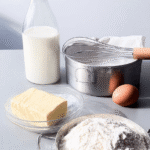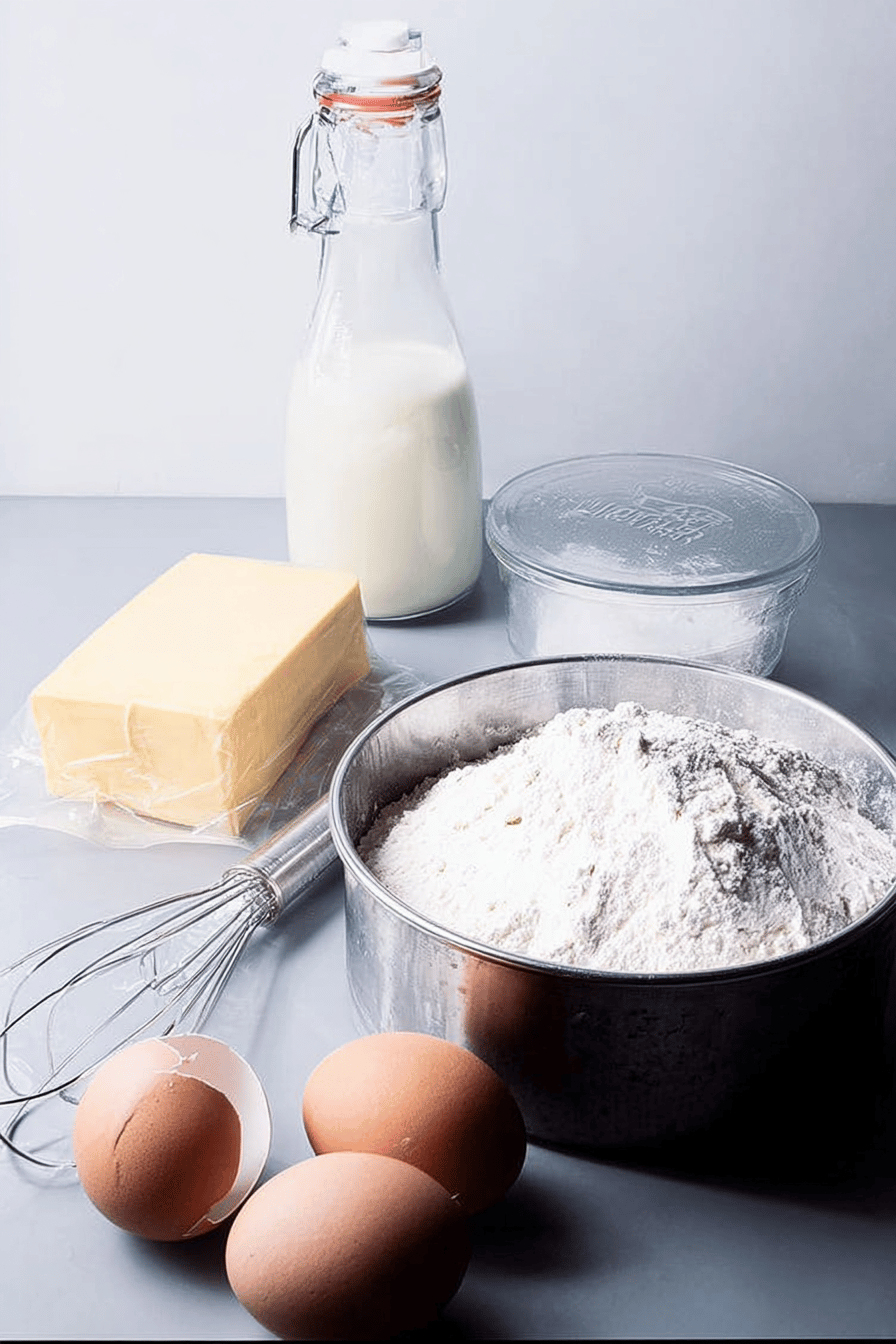Why You’ll Love This Baking 101
Starting your journey in baking doesn’t have to be overwhelming, and that’s exactly why you’ll enjoy diving into Baking 101. This beginner-friendly guide makes learning straightforward by focusing on tips that help you build confidence right from the start. Whether you’re a busy parent or a student looking for simple activities, these essential baking tips offer an easy way to create treats that everyone can enjoy. With Baking 101, you’ll find practical advice that turns everyday ingredients into delicious results without the stress.
Baking for beginners means enjoying the process while reaping rewards like the satisfaction of homemade goods. Simple baking recipes are highlighted here to show how basic steps lead to tasty outcomes, such as fluffy cakes or cookies. This approach not only saves time but also encourages you to experiment, making Baking 101 a fun way to explore your kitchen skills.
Key Benefits of These Tips
- They focus on ease, helping you avoid common pitfalls with clear instructions.
- You’ll learn how to handle ingredients like all-purpose flour and white granulated sugar for the best results.
- Techniques such as using room temperature ingredients make mixing smoother and more effective.
External link: For more beginner advice on essential baking tips, check out this baking tips for beginners resource.
Jump To
- 1. Why You’ll Love This Baking 101
- 2. Essential Ingredients for Baking 101
- 3. How to Prepare the Perfect Baking 101: Step-by-Step Guide
- 4. Dietary Substitutions to Customize Your Baking 101
- 5. Mastering Baking 101: Advanced Tips and Variations
- 6. How to Store Baking 101: Best Practices
- 7. FAQs: Frequently Asked Questions About Baking 101
- 8. Baking 101
Essential Ingredients for Baking 101
In Baking 101, the focus is on building a solid foundation with key ingredients that every beginner should know. This guide emphasizes using room temperature ingredients to ensure even mixing and better results in your baked goods. Selecting the right types, like all-purpose flour for structure and white granulated sugar for sweetness, plays a big role in success. Remember to test leavening agents such as baking powder and baking soda to confirm they work well and help your bakes rise properly.
Basic Ingredients List
Since this guide highlights techniques over specific recipes, we’ll list essential ingredients without exact measurements. This way, you can focus on quality and preparation. Here’s a structured list of the core items you’ll need, based on common recommendations in the user’s input:
- All-purpose flour – Provides essential structure
- Baking powder – Helps with rising
- Fresh eggs – Adds richness and binds the mix
- Natural sugar – Sweetens and aids in browning
- Olive oil – Brings moisture and subtle flavor
- Flaxseed meal (for vegan options) – Serves as an egg substitute
- Gluten-free flour blend (for gluten-free needs) – Replaces all-purpose flour
- Low-calorie sweetener (for reduced sugar versions) – Swaps for natural sugar
These ingredients form the base for many simple baking recipes. Always prepare them in advance and choose fresh options to enhance your baking experience.
How to Prepare the Perfect Baking 101: Step-by-Step Guide
Getting started with Baking 101 means following key steps that make the process smooth and enjoyable. Begin by thoroughly reading your recipe to understand everything ahead of time, which helps avoid mistakes. Prepare all ingredients and tools in advance, ensuring they’re at room temperature for easier mixing and accurate results.
Weighing ingredients accurately is crucial, so use a kitchen scale to prevent issues like dense baked goods. Avoid overmixing the batter to keep textures light and fluffy, and always grease pans properly for easy release. Bake on the middle oven shelf unless the recipe says otherwise to ensure even cooking.
Step-by-Step Tips for Success
- Preheat your oven as recommended, often around 350°F, and use a thermometer to check for hot spots in your oven.
- Sift dry ingredients like all-purpose flour and baking powder together for even distribution.
- Mix wet ingredients gently, using room temperature items to avoid curdling.
- Combine dry and wet mixtures carefully, stopping once blended to prevent overmixing.
- Bake and monitor times closely, adjusting for convection ovens or pan sizes to get perfect results.
For more hands-on inspiration, try this delicious lemon oatmeal cookies recipe on our site. Remember to measure ingredients precisely and follow the recipe closely without substitutions at first.
Dietary Substitutions to Customize Your Baking 101
One of the great things about Baking 101 is how easy it is to adapt for different needs. You can tweak ingredients to fit various diets while keeping things simple and tasty. For instance, using room temperature items makes substitutions smoother, like swapping all-purpose flour for alternatives.
Options for Common Dietary Needs
| Dietary Need | Suggested Substitution |
|---|---|
| Vegan | Use flaxseed gel instead of eggs |
| Gluten-Free | Opt for gluten-free flour blends |
| Low-Calorie | Replace sugar with low-calorie sweeteners |
These changes help maintain the texture and flavor you love. Always test leavening agents when making adjustments to ensure proper rising in your bakes.
Mastering Baking 101: Advanced Tips and Variations
Once you’re comfortable with the basics of Baking 101, it’s time to level up with some advanced tips. Familiarizing yourself with your oven’s hot spots using a thermometer can make a big difference in even baking. Techniques like weighing ingredients accurately and avoiding overmixing will help you create professional-quality results at home.
Pro Techniques and Ideas
- Experiment with precise temperature control for better rising and texture.
- Try adding flavors like spices or citrus zest to simple baking recipes.
- Use make-ahead options, such as preparing batter in advance, for busy days.
External link: To refine your skills, explore how to check your baking powder for optimal results.
How to Store Baking 101: Best Practices
Proper storage keeps your Baking 101 creations fresh and tasty for longer. After baking, let items cool completely to maintain their texture. Use airtight containers to protect against staleness, especially if you’re dealing with items made from all-purpose flour and sugar.
Storage Methods
- Refrigerate baked goods for up to 3 days in sealed containers.
- Freeze items for up to 2 months by wrapping them securely.
- Reheat gently in the oven to keep moisture intact.
Monitoring baking times carefully during preparation ensures your items store well, particularly when using different pan sizes.

FAQs: Frequently Asked Questions About Baking 101
What basic ingredients do I need to start baking at home?
To begin baking, you need essential ingredients such as all-purpose flour, sugar (granulated and possibly brown), baking powder, baking soda, salt, eggs, butter or oil, and milk or water. These staples form the foundation for most recipes, from cakes to cookies. Having vanilla extract and cocoa powder can also help add flavor. Starting with these basic ingredients allows you to experiment with various recipes without needing specialty items right away.
How do I measure ingredients correctly for baking?
Accurate measurement is key to successful baking. Use dry measuring cups for flour, sugar, and other dry ingredients—fill the cup and level it off with a straight edge. For liquids, use a clear liquid measuring cup placed on a flat surface to check the measurement at eye level. Spoon flour lightly into the cup rather than scooping directly with the cup to avoid packing it down, which can cause dense baked goods. Consider using a kitchen scale for precise results, especially for flour and butter.
What temperature should my oven be set to for baking cakes?
Most cake recipes recommend baking at 350°F (175°C) for even cooking. However, some cakes like angel food or sponge cakes may require lower temperatures (325°F or 165°C). Always preheat your oven fully before placing your batter inside. Using an oven thermometer can help you verify your oven’s true temperature, as many ovens run hotter or cooler than the set temperature, which can affect baking times and results.
How can I prevent my baked goods from sticking to the pan?
To avoid sticking, grease your baking pan with butter or shortening, then lightly dust it with flour, shaking out the excess. Alternatively, use parchment paper to line the bottom and sides of the pan, which allows for easy removal. Non-stick spray with flour can also be effective, especially for cakes. Make sure to apply these treatments evenly, and allow cakes to cool slightly before attempting to remove them from the pan to minimize breakage.
What are common mistakes beginners make in baking, and how can I avoid them?
Common mistakes include overmixing batter, which can lead to tough baked goods, inaccurate measuring of ingredients, skipping preheating the oven, and opening the oven door too often during baking. To avoid these, mix ingredients until just combined, measure carefully, preheat your oven for at least 15 minutes, and resist opening the oven door until near the end of baking time. Following the recipe closely and using a timer can also help you achieve better results.

Baking 101
Description
🍰 Baking 101 Essential Tips prepares beginners to confidently master simple recipes with ease and accuracy.
🧁 Following these techniques ensures consistent results and enjoyable baking experiences every time.
Ingredients
– All-purpose flour for structure
– Baking powder for rising
– Fresh eggs for richness and binding
– Natural sugar for sweetness and browning
– Olive oil for moisture and subtle flavor
– Flaxseed meal for vegan options, serves as an egg substitute
– Gluten-free flour blend for gluten-free needs, replaces all-purpose flour
– Low-calorie sweetener for reduced sugar versions, swaps for natural sugar
Instructions
1-Preheat your oven: Preheat your oven as recommended, often around 350°F, and use a thermometer to check for hot spots in your oven.
2-Sift dry ingredients: Sift dry ingredients like all-purpose flour and baking powder together for even distribution.
3-Mix wet ingredients: Mix wet ingredients gently, using room temperature items to avoid curdling.
4-Combine mixtures: Combine dry and wet mixtures carefully, stopping once blended to prevent overmixing.
5-Bake and monitor: Bake and monitor times closely, adjusting for convection ovens or pan sizes to get perfect results.
Notes
📏 Weigh ingredients precisely for consistent outcomes.
🔥 Familiarize yourself with your oven’s temperature and hot spots for even baking.
⏰ Monitor baking times carefully to avoid over or under-baking.
- Category: Baking Tips
- Method: Various baking techniques
- Cuisine: Universal
Keywords: Baking, Tips, Beginners, Simple Recipes


